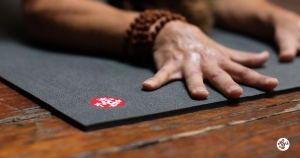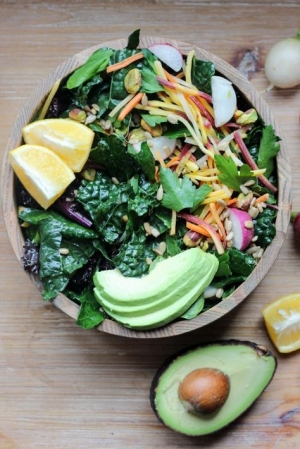

Displaying items by tag: move
Sunday, 17 December 2017 11:00
Laugh Triple & Love Without Measure
Published in
wellness + nourish + move
Wednesday, 30 August 2017 12:04
Connecting with Nature to gain Optimal Wellness
Deep Ties to the Earth: How One Northern Cree Tribe Finds Peace of Mind

Mybona/Thinkstock
A new study reveals that the community’s strength and resilience are tied to the people’s spiritual openness, community engagement, and connection to the land.
Only when the last tree has died and the last river been poisoned and the last fish been caught will we realize we cannot eat money. — Cree Proverb
In northern Ontario, near Hudson Bay, lies a remote, fly-in only Cree community with significantly lower rates of depression and suicide than other aboriginal communities in the area. In an effort to understand why this is so, a couple of researchers obtained grant funding, ventured into the area and asked the community members themselves. The findings of their study are published in the International Journal of Mental Health and Addiction.
The researchers wanted to avoid the Western medical model of focusing on pathology, or illness, alone, so they chose to interpret the participants’ responses according to the “medicine wheel” of traditional healing. This wheel reflects the four dimensions of the self (mental health, physical health, emotional health and spiritual health) as equal parts of a larger whole.
Overall, the findings reveal that the community’s strength and resilience in all four of these areas of health are tied to the people’s spiritual openness, community engagement, shared parenting, and perhaps most notably—a very deep connection to the land and traditions. In fact, most striking to the researchers was the way in which a connection to the land was interwoven throughout all of their responses.
For example, the community members said that their practice of harvesting and hunting their own food provides them with several important benefits: healthy meals, physical exercise and a connection to Cree traditions and cultural practices. They also believe in the importance of benefiting from the entire animal with one respondent saying “when people just harvest this for the sake of the meat and throw away a lot of stuff…they’ve lost their culture totally.”
Seeing wild animals on a regular basis is another fantastic perk, and the land is open and free, allowing people to feel comfortable where they are. In what was perhaps a particularly telling response, one participant said that the community did not “administer social assistance” as it has the potential to make “people totally quit from living off the land.”
The land itself is considered a source of spiritual renewal and healing. The respondents spoke of having a way of life that is still in touch with the natural flow and rhythm of wildlife. A majority referred to their relationship with the earth as a spiritual connection: “when you’re there, it’s like your spirit, your mind, and your physical well-being – everything improves when you’re out there; it’s like you rejuvenate while you’re out there.”
Perhaps the rest of us can learn from these important findings as well and give us substantial food for thought: How disconnected do you feel from the land? Do you take long random walks in nature? Do you see animals on the regular? Do you garden—or at least know where your food comes from? If not, make an effort this week to forge a deeper connection to the earth. Perhaps you will notice a different state of mind—and even a little peace of mind.
Traci Pedersen is a professional freelance writer who specializes in psychology, science, health, and spiritual themes. Some of her most recent work includes covering the latest research news in science and psychology, writing science chapter books for elementary students, and developing teacher resource books. When she is not researching and writing, she is spending time with her family, reading anything and everything, and going to the beach as often as possible.
Published in
wellness + nourish + move
Thursday, 24 August 2017 15:42
Breath Your Way to a Pain-Free Life with YogAlign
Most of the ‘breakdowns’ and chronic pain patterns in the human body occur in the joints. When you change alignment patterns, joints are no longer compressed and misaligned, so the real healing by the body itself can happen on a deep level.
As you gain the tools that will connect all parts of your body with better oxygenation, nutrition and proper alignment, the bio-intelligence can then heal the joint tissues that have become thin, damaged or arthritic. The best way to do YogAlign is to walk, run, dance or move with a focus on maintaining upright posture. Eventually naturally aligned posture becomes innate and just the way you are naturally…. without effort.
With YogAlign you can get back into good posture without painful positions, compressive twists or toe touching poses. You can literally breathe your way to a pain-free life.
Published in
wellness + nourish + move
Thursday, 23 February 2017 11:27
Recalibrate your Psoas Muscle with this Lunge
Source: Yoga International
FEBRUARY 20, 2017

The psoas muscle has gained a great deal of attention in recent years. Wellness expert and holistic doctor Christiane Northrup calls it “the most important muscle in your body.” I became intimate with my own psoas muscle a couple of years ago, after developing chronic lower back pain.
Learning how to find the perfect balance between stretching and strengthening my psoas became my mission in life, and it led me to attend a five-day workshop at Kripalu with Michaelle Edwards, founder of YogAlign. I learned so many things from Michaelle, but the psoas lunge is my absolute favorite. It has become a regular part of both my home practice and my teaching. Every time I teach it, at least one student will approach me after class with bright, wide eyes and say “That new lunge you taught us—It. Was. So. Awesome.”
Here’s how to incorporate the psoas lunge into your own practice.
Step 1: Think: “The Opposite of Sitting”
I find it very helpful to keep in mind the phrase “the opposite of sitting” when I’m practicing or teaching the psoas lunge. Picture yourself seated in a typical chair. Notice that your hips are in flexion, with your knees bent toward your belly. Chances are that your back is resting against the back of the chair (which means the chair is doing the work of your core muscles). Your shoulders may be hunched forward slightly.
Sitting has been called the new smoking, and the negative outcomes of too many hours spent in this position are countless. Since the psoas muscle connects the hips to the spine (it’s actually the only muscle that connects the spine to the legs), it becomes short, weak, and tight from too much sitting.

Recognizing the negative impact of sitting inspires the question: What does the opposite of sitting look like? One answer: the psoas lunge.
Step 2: Balance Strength and Stretch

As a result of an initial visit to an orthopedist, subsequent physical therapy, my own anatomy detective work, and various yoga trainings, I learned that I am hypermobile—with loosely set hips, as confirmed by an X-ray. Overstretching had pushed my body past its natural edge. The experts I spoke to believed that to be the source of my back pain, and they suggested I develop a greater focus on strength rather than flexibility in my practice. That’s what makes the psoas lunge so powerful: It’s a dynamic stretch in which the muscle is engaged and active (versus passive).
With two blocks handy at the top of your mat (on the lowest level to start), come to your hands and knees in tabletop position. Step your right foot between your hands. Shift your left knee back so that your weight is slightly above the kneecap rather than directly on the center of it. You’ll immediately notice a nice opening in the front of the left hip here in low lunge (anjaneyasana). The toes of your left foot should be pointed, the top of the foot resting on the ground.
Place a block beneath each hand. Depending on the length of your arms, you may want to use the medium or taller height of the block, with the goal of making sure your hands feel steady and supported. Bringing hands onto blocks also keeps the heart open and prevents the back from rounding. Bring your gaze toward the floor and slightly forward so that the back of your neck is in its natural alignment. Avoid either pressing the chin to the chest or lifting it toward the sky. Notice your shoulders: If they’ve crept up toward your ears, allow them to soften. Take a breath here.
To come into the psoas lunge, press evenly into the top of your left foot, making sure not to let it collapse either left or right. This will lift your left knee off the ground. Your hands remain on the blocks. Stay here for three to five breaths. Silently saying “the opposite of sitting” can help you visualize the anatomical work being done in this pose. You might wish to draw your breath and attention to your deep core, envisioning your psoas muscle being both stretched and strengthened in this posture. On an exhale, allow the left knee to return to the floor.
Return to your starting point on hands and knees. Then repeat on the opposite side by stepping your left foot forward between your hands, drawing the right knee back, and pressing into the top of the right foot, with toes pointed.
Step 3: Harness Your Breath
As with any yoga posture, the use of your breath can greatly complement the psoas lunge. Since the psoas is connected to the diaphragm through ligaments and fascia, making sure that you are using the full capacity of your breath, with deep belly breathing (also called diaphragmatic breathing), will allow you to harness the maximum benefit of this posture. The breath works the lunge from the inside out, creating powerful shifts in your deep core.
Step 4: Sit Differently
Writer Annie Dillard once famously said, “How we spend our days is, in fact, how we spend our lives.” Be mindful that spending most hours of your day in a hunched, seated position cannot be balanced by an hour on the mat, although it’s certainly a step in the right direction. Start by noticing how you sit, and how often. When sitting, don’t lean against the back of the chair—instead allowing your core muscles to do the work for which they were designed.
Take regular walking breaks, try a standing desk, or sit up on a yoga block while seated in a chair (another one of Michaelle’s great recommendations for decreasing hip flexion). Sitting on an exercise ball can also be a good option, if the ball allows your hips to come higher than your knees—as that’s the indicator of the quality of your seated position. Be mindful of keeping both legs forward, and consider how tucking or crossing one leg could lead to long-term imbalances.
Added to your practice of the powerful psoas lunge, these various modifications to your daily habits may gradually have their effect on your strength, your comfort, and your confidence. And finally, you may find that spending your days differently will change how you spend your life.
Click on this link for more information on the psoas by Holistic Doctor Christiane Northrup http://www.drnorthrup.com/psoas-muscle-vital-muscle-body/
Published in
wellness + nourish + move
Thursday, 09 February 2017 21:25
7 Things You Can Do This Month To Reduce Inflammation: A Neurologist Explains
by Dr. Ilene Ruhoy 8 February 2017
Many health discussions focus on heart disease. And while this is an important discussion because it can help many prevent heart attacks, just as importantly, the blood vessels that feed the brain (known as cerebral vasculature) are equally as vulnerable and in need of protection. And it is the health of these cerebral vessels that's important in preventing a stroke.
Ever wondered how blood gets to your brain?
Briefly and simply, the brain receives its blood supply from the two internal carotid arteries that course up the sides of the neck and the two vertebral arteries that travel up the back of the neck. All of these arteries combine and form what is called the circle of Willis, a ring of vessels from which all major cerebral vessels arise. Before combining, the vertebral and basilar arteries also send off branches to feed the other parts of the brain like the brainstem and the cerebellum.
A stroke is a blockage of a cerebral vessel and can be devastating, resulting in impaired quality of life or even in end of life. The area of the brain affected by the stroke is based on the specific vessel that has been unable to deliver proper blood supply to its corresponding brain tissue. And each region of brain tissue has an associated function, whether its motor, sensory, visual, perception, speech, or cognition. There can be some stroke warning signs—but oftentimes there are none.
To prevent a stroke you have to tackle inflammation.
Known risk factors for cerebral vessel disease include elevated blood pressure, elevated lipids, diabetes, smoking, alcohol, obesity, genetics, underlying disease such as autoimmunity or blood disorders, medications and drugs, stress, poor nutrition, poor sleep as well as sleep apnea, age, or a previous stroke or heart attack. The common pathway for many of these risk factors? Inflammation. Many of these risk factors result in inflammation of the vessels, known as vasculitis.
So what can we do? Some of the very same things we do to hopefully prevent a heart attack can also help to prevent a stroke. And remember: Your lifestyle choices always matter.
1. Adopt a plant-based diet.
The vast array of vitamins, nutrients, and essential compounds that are found in plant-based foods help to lower blood pressure, improve glucose control, reduce inflammation, and help in weight loss. Try to minimize or eliminate pro-inflammatory animal products.
2. Normalize your sleep.
If you have sleep apnea, get it treated because sleep apnea results in less oxygen delivered to the brain during sleep—a critical time for many of the brain's functions. For example, sleep helps to form and retain lessons and memories from the day before. Sleep hygiene is important, so try to go to sleep and wake up at the same times each night.
3. Don't skimp on fresh air and exercise.
Regular daily exercise—preferably outside for the added beneficial effects of the great outdoors—is important to reduce blood sugar, lower weight, and reduce stress.
4. Avoid alcohol and tobacco.
If you need help quitting, please reach out for help or speak to your physician.
5. Supplement to fight inflammation.
Herbal formulations are great for preventive purposes. Boswellia lowers brain inflammation and N-acetylcysteine (NAC) is a powerful antioxidant that will work to scoop up those inflammation-causing free radicals. Meadowsweet and white willow bark are natural sources of salicylate acid, the active ingredient in aspirin. Important: If your risk factors are great enough that you need aspirin, these herbs are not a substitute.
6. Give acupuncture a try.
Studies have demonstrated the positive effects on cerebral blood flow with particular head acupoints.
7. Start the day with a juice.
Start each morning with a powerful anti-inflammatory and antioxidant combination that includes turmeric and ginger, along with fruits and vegetables. It is the perfect time to infuse your hungry cells with crucial vitamins and nutrients to set them up for physiologic success!
You have the power to heal your body, improve your health, and prevent disease. So harness that power and take one day at a time.
Published in
wellness + nourish + move
Wednesday, 28 December 2016 17:04
Love & Laugh Abundantly
Published in
wellness + nourish + move
Contact Leonie Main
m: +64 (0) 274 96 96 33
19B Golf Road, Mount Maunganui 3116, New Zealand
Facebook: Gypset Life







